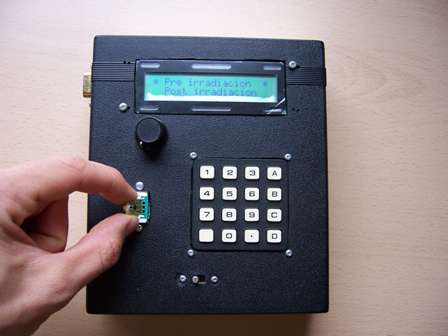|
|
|
| Oncology | |
Miniaturised, low-cost device to monitor radiation exposure during radiotherapy18 November 2007 A team from the Department of Electronics and Computer Science at the University of Granada (UGR), together with the Department of Radiology at the Hospital Virgen de las Nieves in Granada, have developed a portable and low-cost device which can measure the ionizing radiation a patient is exposed to during, for example, radiotherapy.
Ionizing radiation plays a vital role in the treatment and diagnosis of malignant neoplastic illnesses as well as in the diagnosis of other pathologies. However, according to Manuel Vilches Pacheco from the Medical Physics and Radiology Department at the Hospital Virgen de las Nieves in Granada, “The potential harm ionizing radiations can cause means that, in order to obtain clinical benefits and reduce the onset of unwanted adverse effects as much as possible, they must be used under strict quality control”. This makes it important to develop instruments which can verify the final result by carrying out a direct follow-up of treatments administered to patients, such as image registration (portal imaging system) or the in vivo measurement of the exact dose administered to patients. In vivo control Portal imaging systems have greatly improved in the last five years and are widely used today. This is not the case for systems used for in vivo dose measurement which, in a significant number of patients and treatment sessions, “has been limited to a few centres”. This is because a great amount of effort is required to place the device onto the patient and as it interferes noticeably with the treatment it can considerably modify the distribution of the administered dose. The new device is made of low-cost and reusable electronic devices, does not require an electricity connection or a reading supply unit and it minimizes treatment disorders. This is “something that was impossible until now,” according to Alberto Palma López, Department of Electronics and Computer Science at the University of Granada. Furthermore, the device’s design has metrological characteristics which ensures that it performs correctly at high temperatures. This means the room does not need to be specially adapted. The detector’s minuscule size can measure the radiation quickly in different areas of the body as well as keep a historical record of the patient. Significant progress has been made in encouraging the widespread use in vivo dosimetry control, an important element among patients undergoing radiotherapy. However, its use can be extended to other radiological practices such as diagnosis by x-ray or for the protection of professionals exposed to a radioactive environment. |
